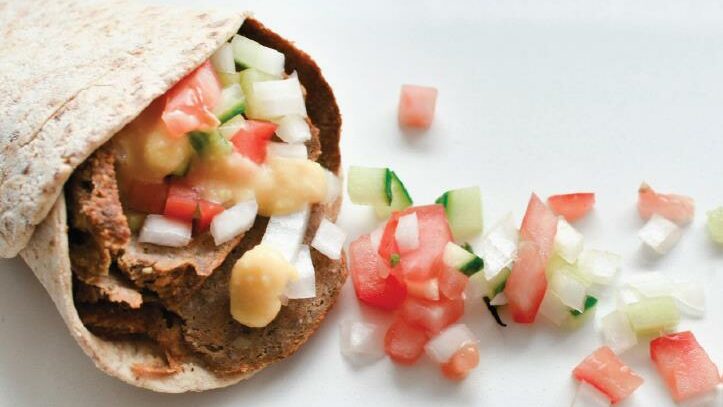
In this series, we ask dietitians across Canada to answer your questions on nutrition and dietary support. We recently spoke with Amy Chow, a registered dietitian based in Langley City, BC.
This month, Amy answers a question on how to involve kids with food allergy in the kitchen and notes the benefits for doing so.
What are some ideas for involving kids with food allergy in the kitchen?

Cooking at home is an incredible way to learn together while connecting with your kids in a relaxed and fun environment. While you are navigating food allergy and may be experimenting with new ways of cooking and recipes, why not get your kids involved in the process?
Kids as young as 2 years old can start to get involved in the kitchen in age-appropriate tasks, like rinsing fruits and vegetables, while older kids can take on mixing ingredients in a bowl or following instructions on a recipe. The more positive experiences that kids can have with food preparation, the more likely they will be willing to eat what you’ve made together.
Here are 5 steps to success when involving kids with food allergies in the kitchen:
1. Safety first! It is always a good idea to implement some non-negotiable safety rules, especially in the kitchen where there can be many different hazards. This can include tying long hair up, proper hand washing, and always asking before tasting food (an important one for kids with food allergy!). You can also use this opportunity with your kids to go over effective ways to avoid their allergen(s), prevent cross-contamination and practice label reading.
2. Keep it positive and fun! Kids, especially younger ones, can have short attention spans and are notorious for making a mess, but this is all part of the learning process. Plan for extra time in the kitchen so that you and your kids don’t feel rushed and stressed. Allow them to do things in their own creative ways whenever possible. If they seem to be struggling, ask if they want any help. Start with simpler recipes in the beginning and as your child gets older, they will develop the skills, increase their attention span, and interest to complete more elaborate tasks and hopefully take some responsibilities off your plate, maybe even clean-up!
3. Plan and prep in advance. Choose recipes that are suitable for the whole family so everyone can participate and enjoy safely. You can simplify the process by getting all the ingredients and kitchen tools you need ready in advance. Take extra steps like having dedicated cutting boards and deciding on appropriate substitutions for recipe ingredients as needed.
4. Create a no-pressure environment. Having your kids involved in the kitchen is a great way to help them learn about a new allergy-friendly food. Kids often need repeated attempts to accept a new food, and cooking allows your kids to explore with all their senses and increase the likelihood of them trying a new food or recipe. You can best support your kids by creating a no pressure, no expectation environment to try everything they make. With time and patience, your kids might just open up to trying these foods on their own.

5. Choose recipes that allow for creativity and safe substitutions! Recipes that are versatile and easy to “make it your own” are so much fun as you and your kids can choose different ingredients and/or combinations that are also going to be allergy-friendly.
These recipes are great teaching tools to help your kids learn about the allergen(s) they need to avoid in these common food items and the safe substitutions that are available! You can try them at home (Note: please choose age-appropriate foods and adapt to your kids’ specific allergens):
- smoothie or smoothie bowl: choose your milk or milk base, add in and/or top with your kid’s favorite fruits and veggies
- yogurt parfait: choose from regular yogurt, soy yogurt or coconut yogurt, top with your kid’s favorite cereal and frozen fruits
- homemade trail mix: make a nut-free trail mix with your kid’s favorite cereal, seeds, popcorn, crackers and dried fruits
- spreads, dips & salad dressings: make a sesame-free hummus, a dairy-free ranch dip, your own seed butter or a simple salad dressing
- bread, pancakes or muffin: make allergen-free bread rolls, banana pancakes or oatmeal muffins
Involving kids in the kitchen is one of the best ways to empower them. It helps set them up for success by providing the necessary knowledge and practical skills to live confidently with food allergy and transition to independence and self-management when they are ready.
Learn more
Do you have a question you’d like to ask a dietitian in the months to come? If so, send it along to us at info@foodallergycanada.ca. Please note: The dietitians featured in this series answer questions on general topics, please talk to your doctor if you have questions about your own health or the health of your child.
Tags: ask the dietitian, Kitchen

